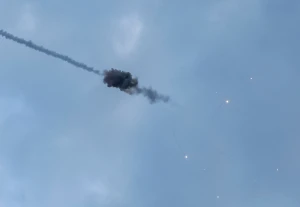
What’s behind Trump’s claim to end war in 24 hours
The world misunderstood Trump’s words about “ending the war in 24 hours.” According to journalist Orest Sohar, the Republican leader was referring to a simple ceasefire, not an actual resolution. In reality, Ukraine could remain in a state of war with Russia for years to come, much like the ATO
Trump's intention to “end the war quickly” is starting to take shape. The latest reports from his campaign headquarters, shared by The Wall Street Journal, shed light on his plans. Sohar, summarizing these reports, outlines the proposed plan.
The plan involves freezing active hostilities, even if it means making significant concessions from Kyiv. The proposal includes handing over 20% of the occupied territories to Moscow and preventing Kyiv from seeking NATO membership — for 20 years, according to one version, or possibly indefinitely, according to another.
Sources suggest that Trump might also block Ukraine's integration into other "allied institutions," effectively the EU.
Once the front lines are frozen, the proposal includes establishing a 1,287-kilometer demilitarized zone between Ukraine’s Defense Forces and Russian troops, though it’s unclear who would control this area.
Formally, Trump’s main leverage is arms supplies. According to Sohar, to pressure Kyiv, Trump could stop sending weapons; to provoke Moscow, he might instead give the Ukrainian Armed Forces unlimited access to American arsenals.
However, Sohar notes that war is not like a presidential limousine that can be stopped overnight, because the aggressor and the defenders have very different views of justice.
No matter how difficult the situation may be, the Ukrainian government will not sign an act of partial surrender, giving up a fifth of its territory or, for example, agreeing to reduce the size of its Armed Forces, as Moscow would like. In politics, such demands turn into a long, drawn-out negotiation process, where the final decisions will likely be left to the next generation of leaders. Sohar points out that something similar was planned in the Istanbul agreements, where Donbas and Crimea were supposed to receive special status for years, until some future resolution could be worked out.
The "freeze plan" doesn’t address the security guarantees that Ukraine has been seeking, the wording of which has been crafted with the help of European partners. The lack of security guarantees is a major risk, leaving the door open for renewed aggression from Moscow.
It is becoming clear that Trump is not willing to offer Ukraine strong guarantees, neither NATO membership nor the status of the Alliance's main partner. Therefore, Brussels and Kyiv will need time to negotiate a local security agreement. Sohar suggests that the UK, Poland, the Baltic states, and possibly France could be involved. From today’s perspective, this is the most that can realistically be expected.
Putin will also complicate Trump’s situation by presenting his own wish list. If Washington fully meets Moscow’s demands, the Kremlin's leader will appear as the victor, while the new president will look like a loser who capitulated to dark forces.
This is yet another reason why the White House will likely need to keep the situation "frozen" for a while — giving time to establish relations with the Kremlin.
In other words, Trump’s “freeze diplomacy” seeks to end the hot phase of the war by shifting the toughest battles to diplomats. First, the two sides will agree to stop shelling civilian infrastructure and exchange prisoners. After that, Sohar suggests, who knows — maybe an American ultimatum to pull back.
- On November 6, Volodymyr Zelenskyy spoke positively about Donald Trump's victory in his evening address. He noted that “we have the potential for stronger cooperation.”
- News













































